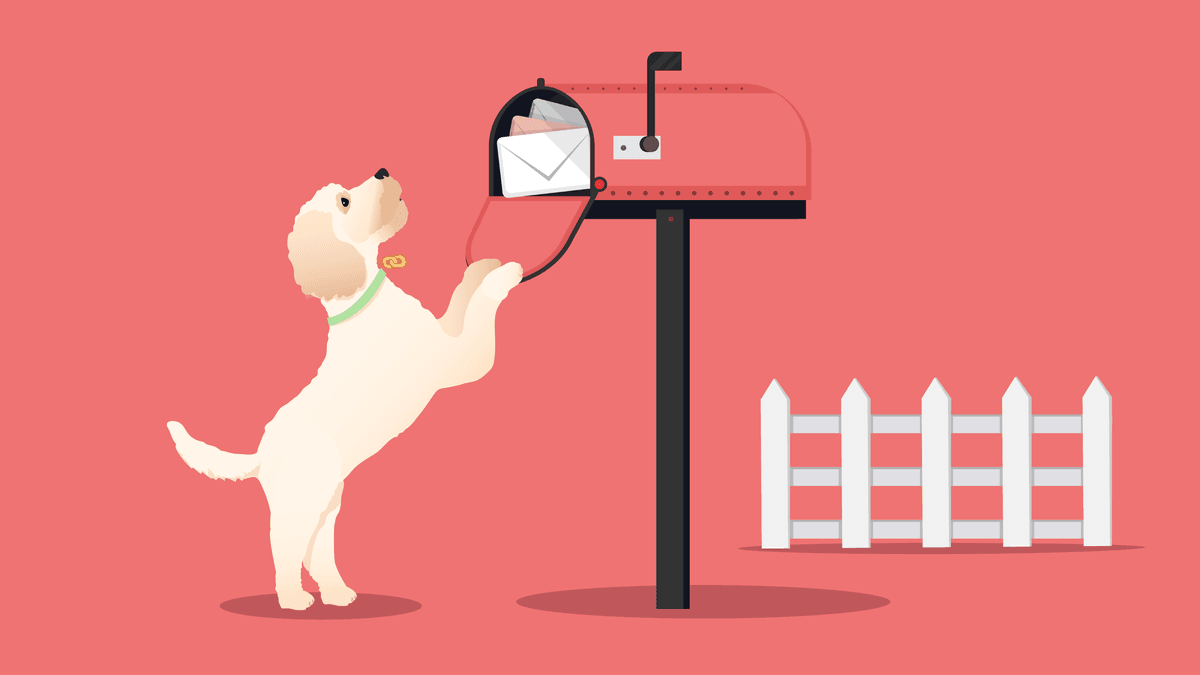
The Ultimate 7-Step Link Building Checklist: From Planning to Negotiation
Effective link building strategies contain many different steps. If you're new to the industry, putting all these pieces together can be challenging.
To simplify the process, we’ve created this link building checklist. It contains everything you need to build authoritative links at scale.
Key Takeaways
A link building checklist ensures you perform all the steps necessary to generate high-quality links.
Our checklist covers all link building elements, such as choosing a strategy, prospecting, outreach, and link negotiation.
It also helps with all the primary link building tactics, such as guest posts, skyscraper outreach, and HARO links.
A checklist is an excellent way to start building links if you are new to link building.
Link Building Checklist: 7 Key Steps
We’ve broken this checklist down into seven separate steps. Performing each one will help you run effective link building campaigns.
Step One: Link Building Strategy Assessment
The first part of any link building campaign is to develop a strategy that suits your business.
At LinkBuilder, we do this by creating a proposal for each client that we onboard.
Here are the three steps we use:
1) Identify Your Link Building Strengths
There are many ways to build links, so the first part of a link building campaign is choosing the ones that play to your strengths. These strategies will become a crucial part of your overall campaign.

Here are some common business characteristics that lend themselves well to certain types of link building:
A strong network of business/website owners: Link exchanges, guest posts, or adding expert input to other people’s posts
A high level of expertise in a particular area: Writing guest posts on authoritative websites or answering questions on HARO
Content creation or web design skills: Creating content for linkable assets
Strong sales skills: Running website outreach campaigns
Operating multiple websites: Link exchanges across different websites
Media contacts or PR expertise: PR link building campaigns
An existing brand with a lot of exposure: Unlinked mentions
Find out more about our favorite ways to earn high-authority links in this article.
2) Find Your Most Linked-To Content
If your website is established, it may already have links. Finding out which pages have the most links is helpful for two reasons:
It highlights the type of content you should create to generate more links
It highlights content you could use for future linkable assets campaigns
Finding your most linked content is easy. Head to Google Search Console to see which pages have the most links. You can also see the domains that link to each page.

Or you can use an SEO tool like Ahrefs or SEMRush to see your most linked-to content and the specific pages that link to each piece.
Just search for your website in one of these tools and then choose the option to see the pages with the most backlinks.
Below is the most linked-to content on the popular SEO blog Backlinko. If we were to build links to this website, we would consider using some of these pages as the basis of our campaigns.
Another benefit of knowing your most linked-to pages is that you can add internal links from them to other content on your website. This spreads link authority across your site.
3) Perform Competitor Backlink Analysis
Discovering how your competitors generate links is a great way to see what strategies work for websites like yours.
You can see your competitors' links in your SEO tool.
In Ahrefs, click on your site and then hit “Competing Domains” in the sidebar. This highlights a list of websites that rank for similar terms to yours.
Below are websites that rank for similar terms to LinkBuilder.
Once you have this information, head to the backlinks report seeing which pages have the most links.
You can also look at the pages that link to the website. This can provide further insight into the strategies your competitors use.
Here are some of the types of links to look out for and the strategy the site may have used to generate the links:
Links from guest posts: Outreach-based guest post strategy
Links in expert roundups: HARO link building
Links in “best of” lists: Reach out to these websites and ask to be featured in these lists
Links with keyword match anchor text: Outreach, linkable asset, or paid link building campaigns
Link Building Strategy Checklist
- Discover your link building strengths
- Identify your most linked-to content
- Check your competitors’ link building strategies
Step Two: Identify Quick Wins
People new to link building can generate quick wins before starting their campaign.
Here are three strategies you can use:
1) Find Relevant (High-Quality) Directories
Directories are lists of businesses in a particular niche. Popular ones include Tripadvisor for travel and G2 for SaaS products.
But many niches have both large and small high-quality directories. You have to find those relevant to your brand.
Directories typically give nofollow links. This means Google crawlers will ignore the links, and they won’t affect your authority.
But they can still be an excellent way to build brand awareness. They may also bring in traffic or sales.
Only Use High-Quality Directories 🏆
Google warns against adding your site to many directories to generate links. Only add your website to high-quality directories.
2) Find Forums and Communities
Forums and communities allow you to add links to your website profile pages or forum posts.
Like directory links, these are typically nofollow but can result in high-quality, relevant traffic.
Look for subreddits, Facebook groups, online communities, and online forums.
3) Discover “Best Of” Lists
Whatever your niche, someone has likely created a list of the best websites, products, or businesses in your area.
Search on Google to find these lists, and ask the webmaster to add your site. This is an excellent way to get links from high-quality websites.
4) Search for Unlinked Brand Mentions
Another quick and easy form of link building is to search for unlinked mentions. An unlinked mention is when a website mentions your brand but doesn’t link to it.

You may have many potential link opportunities if your brand has been around for a while.
The easiest way to find unlinked mentions is to use the Mention app. This highlights all your brand’s mentions, and you can then use filters to see the ones without links.
You can also use Google Search Alerts to be notified of all future mentions.
Add your brand or product name to the search bar and then choose the options that meet your needs.
Whenever someone mentions your brand, you’ll receive an email from Google.
Link Building Quick Wins Checklist
- Find directories in your niche
- Find forums and communities where you can share your posts
- Discover “best of” lists
- Search for unlinked mentions
- Set up Google Alerts
Step Three: Find Outreach Targets
Most link building tactics involve contacting other websites to ask them to link to your website.
The first step of any outreach campaign is discovering suitable targets. This means high-quality websites in niches that publish content related to your business.

Here are four ways to discover a high volume of outreach targets:
1) Identify Relevant Niches
First, make a list of niches that are relevant to your website.
Most websites can target three types of websites: those in your niche, those in the broader niche, and those in adjacent niches.
We’ve used the example of a running shoes website to show what each category could consist of.
Websites in your niche: Running shoe sites
Websites in the broader niche: Running, general exercise and fitness sites, athletic equipment sites
Websites in adjacent niches: Nutrition websites, websites that focus on other sports, travel websites, and lifestyle websites.
Once you have a list of relevant topics, you can move on to the next step.
2) Find Websites in These Niches
The next step is to find websites that publish content on each topic.
Just head to Google and search for relevant keywords. Or you can use an SEO tool to discover relevant sites.
The Ahrefs Content Explorer lets you search for content with your keyword in the article content or title.
This will bring up a list of sites that write about your chosen topic. The image below shows the results for the topic “Running.”
3) Find Similar Websites
Once you have a list of websites, you can expand on this by discovering other websites that rank for the same keywords as the sites on your list.
Open the Ahrefs overview for the site and view the “Competing Domains” report.
Add any relevant websites to your list of outreach targets.
4) Find Websites That Link to Your Competitors
Discovering websites that link to your competitors is helpful because these sites have a proven track record of linking to similar sites. Search for your competitor’s website in your SEO tool and check out the websites that link to them.
The best sites to add to your list are those recently linked to your competitor, so organize the report by recent links.
Find Outreach Targets Checklist
- Identify adjacent niches
- Find websites in these niches
- Use an SEO tool to find similar websites
- Find websites that link to your competitors
Step Four: Perform Website Quality Checks
You should only build links from high-quality websites. There are two reasons for this:
Links from high-quality websites are more effective. They’ll pass on more link juice and can direct traffic to your website.
Links from the wrong websites can harm your site. Links from spam sites like PBNs and link farms will either be ignored by search engines or lead to a rankings penalty.
There are several ways to tell a real website from a link farm. Here are the ones we use:
- Content Quality - Real sites have original, high-quality content. The content should read well and include the author’s insight. The site may also have original images or graphics.
- Website Design - The design should look professional and not templated. Some authoritative websites have basic designs, but these are few and far between.
- Business Signals - The website should signal that it is a real business. Look for “About” pages, contact information, links to social media accounts, and articles with named authors. Sites that lack this information are often link farms.
- SEO Metrics - The website should rank for relevant keywords and generate traffic from Google. We typically look for sites that get at least 1,000 visits a month. Avoid sites that rank for spam keywords. Also, check that the website’s DA meets your requirements. Be aware that spam websites can have a high DA, while real websites can have a low one.
- Suspicious Outbound Links - Always look out for suspicious outbound links, as this is a sure sign that a website is a link farm. Signs of suspicious links include keyword match anchor text and links in places that don’t make sense. If the link doesn’t provide value to the reader or support a point, it may have been placed there artificially.
Website Quality Checklist
- Does the site generate traffic from Google?
- Does the website have original and high-quality content?
- Does the site look professional?
- Does the site have clear “About” and contact information?
- Does the site rank for relevant keywords?
- Does the site meet your target authority?
- Do the articles contain suspicious links?
Step Five: Run Outreach Checks
Effective link building outreach requires you to send targeted messages with your proposal.
Unfortunately, most website owners are inundated with requests for backlinks. This means you need to make yours stand out.
Here are the steps we use in outreach to ensure we get the best chance of receiving a reply:
1) Choose the Right Person
The best person to send your message to is usually in charge of content.

At small websites, this is likely to be the business or website owner. For larger sites, this could be the content or marketing manager.
Find the relevant person’s contact information on the website via LinkedIn or Twitter or an email finder program like Hunter.io.
2) Introduce Yourself
Introduce yourself and your brand when sending outreach emails.
If you ask for a guest post, add links to published content to show the prospect that you can produce quality content.
Ideally, this content should be published on authoritative blogs or websites. This is good social proof and shows outreach targets that other websites have accepted your proposal.
If you’re using a skyscraper link building strategy, introduce the content and why it is worth sharing.

3) Personalize Each Email
Successful outreach requires you to personalize each email you send. You can’t rely on mass outreach programs unless you segment your prospects into small groups.
We ensure each email mentions the recipient's name and website and includes a pitch relevant to their published content.
4) Include a Value Proposition
A good value proposition gives websites an extra incentive to link to you.
Some ways to do this include:
Offer to share the article on your social sites or email newsletter
Provide a prewritten guest post that targets a particular keyword
Provide a link on your website
Outreach Email Checklist
- Is your email recipient the person in charge of content?
- Is the email personalized?
- Have you introduced yourself and your expertise?
- Have you included a pitch relevant to the content the website produces?
Have you included relevant examples of your content? - Have you included a value proposition for the other website?
- Is the email subject enticing?
- Have you scheduled a follow-up message?
Step Six: Negotiate with Other Website Owners
The final step in any link building process is negotiating with the website owner for a link.
How much you can negotiate will depend on the site and the link building strategy you use.
If you’re running a skyscraper campaign and asking for a link to your asset, you won’t have much control over the type of link you get.
Likewise, some high-authority blogs have strict requirements for guest articles. In most cases, it’s worth following these rules to generate a high DA link.
But typical guest posts and link insertions provide more scope for negotiation.

What Should You Negotiate For?
The most crucial negotiation is to get a dofollow link to your website. This is essential, as these are the only links that pass on authority.
Also, consider asking for multiple links, control over the anchor text, and the ability to choose the page your link is to.
If you’re negotiating about a guest post, ask the publisher not to mark your post as one, as this may cause Google to ignore the link. Instead, ask the website owner to create and publish a writer's profile under your name. You can then include the link to your website within the article text.
Link Negotiation Checklist
- Is the website owner happy to add a dofollow link?
- Is the anchor text suitable?
- Are you happy with the conditions?
- Have you asked about including other links?
Step Seven: HARO Checklist
Help a Reporter Out (HARO) is a service that connects journalists and bloggers with expert sources for their stories.
Building high-quality links via HARO requires a very different strategy from most other forms of link building. Instead of contacting websites, you reply to a list of existing link building opportunities.
But you can still take plenty of steps to maximize your chances of creating quality links via the platform.

These are some of the steps we take to improve our chances:
1) Check the Website's Quality
HARO has strict standards for the types of publishers that can use the service. This means most links you get from the service are high quality.
But some are still better than others, so it’s worth checking the website quality before you reply to a request.
We specifically look for the website’s domain rating and the amount of traffic they receive, according to Ahrefs.
We’ve never seen a spam website using HARO. But plenty of low-to-mid domain authority websites use the service.
You may decide it’s not worth replying to requests from lower authority websites, especially if the HARO newsletter has plenty of other opportunities for your niche.
What about Anonymous Requests?
Some HARO requests come from websites listed as anonymous. This means you won’t know which website your quote will appear on.
The people that run HARO say these requests are often from “larger outlets that choose to anonymize their listing,” so we think it’s worth replying to these queries.
If you’re unsure, check the description—sometimes, the writer will include more information about the website there.
2) Choose the Right Requests
Another essential factor to HARO's success is choosing requests you are qualified to answer.
It can be tempting to reply to requests you aren’t qualified for to maximize the number of links you can get.
But when you do this, you’ll have a much lower chance of the journalist choosing your answer. You can waste a lot of time answering requests that don’t generate results.
Make sure your expertise fits the specific criteria the journalist asked for.
3) Answer the Questions in the Right Format
The way you answer the request is also important.
First, look for specific instructions. The request will often ask you to answer questions or include specific details. Make sure your answer has all this information.

If there are no specific instructions, write a short paragraph that includes the information the person seeks.
We keep our responses to under 200 words of well-written, actionable insight. If you aren’t a confident writer, run the response through Grammarly to check for spelling or grammatical mistakes.
Check out this post about HARO link building to see an example of the exact response we sent to generate a link on the DR 82 website LegalZoom.
4) Include Relevant Information
After the response, you can include a short biography of yourself or your company. Be sure to include any information that shows your expertise in the subject matter.
You should also include a link to your website so the writer knows which site to link to. Sometimes the request will ask for a headshot, too.

5) Be Quick
Our final HARO tip is to be quick when replying to queries. Many websites use HARO to generate links, which can be very competitive. But responding quickly means your message will land at the top of the journalist’s inbox.
We only respond to requests on the day they are sent out. Anything older will likely end up at the bottom of a pile of messages.
HARO Checklist
- Does the website meet your quality standards?
- Do you have genuine expertise in the area they ask for?
- Have you answered the question in the right way?
- Have you checked your spelling and grammar?
- Does your reply include a link to your website and a biography?
- Is the request recent?
Following These Steps Will Increase Your Chances of Link Building Success
This link building checklist contains all the steps you need to create an effective campaign. For more information about link building, head to our blog to see our latest posts.
Or you can check out our guides on link building for startups or link building for affiliate websites for more strategies.
If you can’t describe what you are doing as a process, you don’t know what you’re doing.
Do You Want Someone to Build Links for You?
At LinkBuilder, we have a proven track record of running high-quality link building campaigns for ambitious brands. Check out our case studies for more information about our impact on brands, or contact us to discuss your project.

